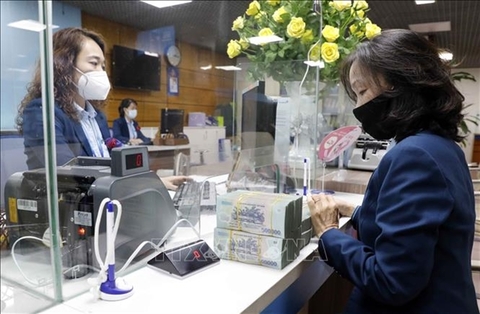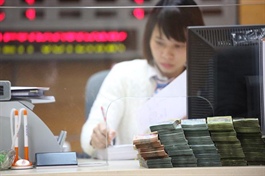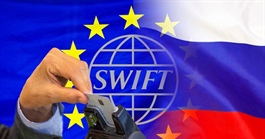Banks race in technological application, capital increase
Banks race in technological application, capital increase
Banks have been racing in applying technologies and increasing capital to enhance their competitiveness and meet the State Bank of Vietnam (SBV)’s regulations.

According to experts, digital application has helped banks reduce operating costs, increase asset quality and reduce the cost of credit risk provisions, while the capital increase has contributed to improving capital adequacy ratio (CAR) to meet the SBV’s regulations.
The Vietnam International Securities Joint Stock Company (VIS) said many banks have spent millions of US dollars to develop core banking systems, which has helped their customers easily connect and make automatic payments on mobile platforms. The investment has helped the banks to lure a large number of new customers.
Sharing the same view, the Vietcombank’s Securities Company (VCBS), said many banks aimed to boost digital transformation, digital banking and ecosystems in the 2020-25 period.
Technology is playing an increasingly important role in the banking industry. Automated banks such as TPB Live Bank and MBB Smart Bank allow customers to open cards, deposit and withdraw money with their fingerprints. With the investment, the banks have so far gained initial success.
According to VIS, the investment in digitalisation to ease customers in making transactions has helped banks lure more customers, which contributes to increasing the banks’ ratio of current account saving account (CASA).
A higher CASA ratio indicates a lower cost of funds, because banks do not usually give any interest on current account deposits and the interest on saving accounts is usually very low. If a large part of a bank's deposits comes from these funds, it means that the bank is getting those funds at a relatively lower cost. It is generally understood that a higher CASA ratio leads to higher net interest margin (NIM).
As banks’ NIM has slowed since the third quarter of last year and is forecast to continue in the first quarters of 2022 due to the implementation of preferential interest rate programmes and the SBV’s requirements on capital adequacy and reserve ratios, VIS forecast banks would have to increasingly digitise to enable them to further mobilise the cheap capital source.
Besides, VIS said, digitisation also helped banks reduce operating costs and improve asset quality, thereby contributing to cutting the cost of credit risk provisions.
Besides the digital application, banks, especially State-owned banks, are also forecast to continually increase charter capital this year to boost financial strength and meet the SBV’s regulations on capital adequacy ratio.
Vietcombank, for example, is expected to issue more than 1.02 billion shares to pay dividends from the remaining profit in 2019 at the rate of 27.6 per cent in 2022. After the issuance, Vietcombank's charter capital will increase by VND10.23 trillion to more than VND47.32 trillion.
The State-owned bank has also planned to have a private placement of nearly 308 million shares, equivalent to 6.5 per cent of its charter capital to 99 investors at most, which will raise the bank’s charter capital to more than VND50.4 trillion. The bank has also expected to continually raise its charter capital to VND54.13 trillion in the near future through paying stock dividends.
Vietnamese banks increased their capital by more than 23 per cent, or more than VND92 trillion, last year. Banks in the top list in the capital increase last year included VPBank (up 78 per cent), SHB (up 52 per cent), TPBank (up 48 per cent), VIB (up 40 per cent) and MBBank (up 35 per cent).




























